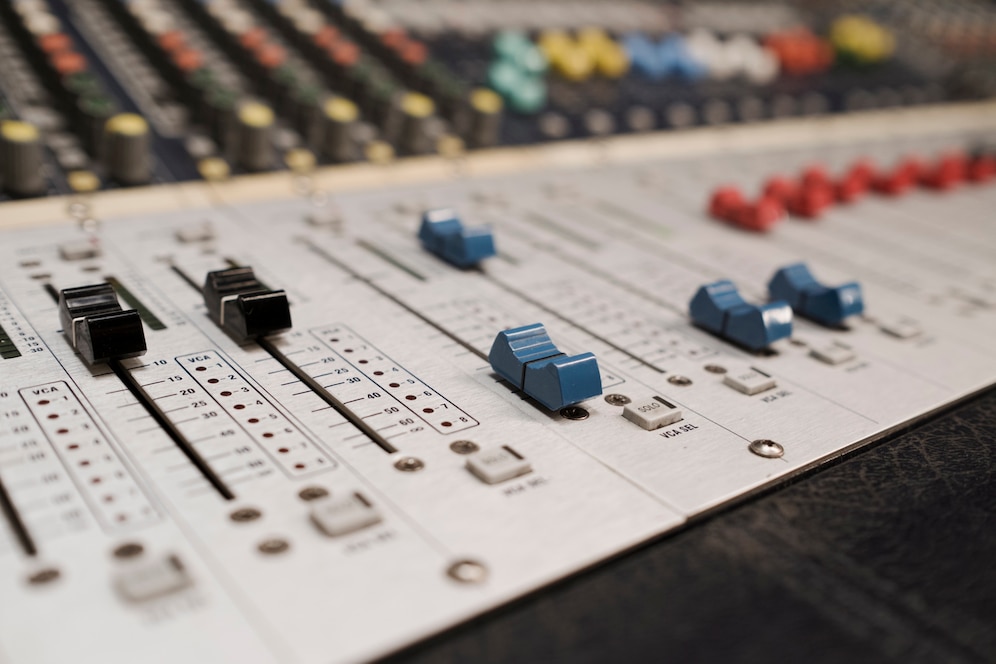Creating clean, punchy, and balanced mixes is the golden standard in the world of audio production. Achieving that level of mastery, however, does not happen overnight. It requires a combination of learning and employing several audio mixing techniques. These techniques aim to ensure your mixes cut across with optimal clarity, providing an immersive and engaging listening experience.
The Art of Audio Blending: Essential Audio Mixing Techniques
Audio blending is an art represented by the precision in audio mixing, which requires the correct application of essential techniques. To ensure clear sound production, you need to observe certain mixing essentials such as proper gain staging, source-track equalization, avoiding phase cancellation, among others. Be sure to make sure each individual track satisfies the right frequency content and range, as this can greatly enhance mix clarity.
When mixing music, be cautious about timing and spatial positioning of different elements. Remember, every piece of the mix must work together, each part complementing the others and existing in its unique space within the frequency spectrum. Think of your track as a sonic painting, where each individual track is a color that fills the sonic canvas.
Also, don’t forget to use only what you need. It may feel like adding extra layers of sounds and effects might improve your mix, but often, less is more. Overcrowding can lead to a mix without clear definition or breathing space.
Achieving Clear Sound Production: Mixing Essentials and Tools
Sound clarity is integral to the mixing process as it determines how well your audience perceives different sounds in your mix. Professional mixing tips advocate for clarity in music production. This clarity can be achieved by employing equalization, effective compression, instrument separation, and good mixing workflow efficiency.
To balance your mixes, apply equalization to cut the unnecessary frequencies from each instrument. This helps to ensure that each instrument will occupy its own unique place in the frequency spectrum, reducing conflicts and increasing the overall mix clarity. Additionally, embrace dynamic range management tactics to ensure your mix is well balanced in terms of loudness. Also, strive to create space by panning the mix elements. This helps to create a wide stereo field, giving your mix an added perception of depth.
Elevating Your Mixing Workflow Efficiency
Brushing up on your workflow will keep your work sessions efficient and help maintain the momentum on your ideas. The process begins with clean audio editing, allowing for a smooth workflow. Here, you can also apply different tricks such as automating your instrument and vocal levels, using high quality plugins, and employing the use of templates.
A common mistake that hampers workflow efficiency is disorganized track layouts. Learn to master the art of organizing your DAW to save time. Consider the color coding and proper naming of importance individual tracks.
Enhancing Vocal Clarity in Mixing: Techniques and Software Choice
Vocal clarity in mixing plays a vital role in music production. It allows the vocalist’s message to come across clearly, enhancing the emotional connection between the artist and the listener. A few techniques will help improve vocal clarity include using high pass filters to remove unwanted low frequencies, attentive de-essing to control harsh frequencies, and using light compression to ensure that your vocals sit prominently in the mix.
The choice of software can also impact the clarity of your vocals. Some of the popular DAWs known for excellent vocal processing capabilities include Pro Tools, Logic Pro X, and Cubase.
Creating a Balanced Frequency Spectrum through Equalization Tricks
Equalization tricks provide a better understanding of how to manipulate frequency response while ensuring a balanced frequency spectrum. This ultimately assists in achieving a cleaner mix balance. Cutting instead of boosting, using a high-pass filter on most tracks (except for the kick drum and bass), or learning to identify problem frequencies by sweeping, are among the various equalization tactics that you can employ for superior mix balance.
Ensuring Effective Compression for Dynamic Range Management
Effective compression is a vital part of dynamic range management. Compressors help balance the volumes of different instruments and prevent certain parts from getting excessively loud. Moderate compression settings, however, can enhance the groove and feel of the performance. While using a compressor, keep in mind that it can also alter the frequency balance of the sound, particularly when used in conjunction with equalization.
Strategies for Achieving a Tight Low-end in Mixes
The low-end in a mix, primarily dominated by instruments like the kick drum and bass guitar, is arguably the trickiest to get right in a mix. Misjudged low frequencies can cloud a mix, making it murky and undefined. You can attain a tight low-end in mixes by paying special attention to three elements; balance, control, and understanding your speakers’ frequency response.
Proper balance is achieved by working extensively with volume levels and equalization. Apply a high-pass filter in your lead vocal, guitars, and other mid-high frequency instruments to control the low-end.
Instrument Separation for Greater Clarity in Music Production
Instrument separation is key to achieving a clean and clear sound. It gives each instrument its ‘own room’ in the mix, enhancing the mix clarity and overall musicality. This practice ensures that every individual track can be distinguished, contributing to the harmonious whole.

Utilizing Spatial Imaging in Mixing for Transparent Audio Production
Spatial imaging in mixing is an essential aspect of creating an immersive and engaging listener experience. It involves using audio effects like panning, reverb, and delay to create a three-dimensional soundstage.
Clean Audio Editing and Punchy Drum Mixes: A How-to Guide
Clean audio editing should be a top priority in the mixing process. It includes processes such as noise reduction, timing correction, breath control and pitch correction, among others.
Punchy drum mixes offer a solution to the genre-spanning problem of weak and lifeless drum sounds in the mix. The key element of punchy drum sounds is managing the low-end carefully. Kick drum and low frequencies should be manipulated using high-pass filters and equalizers with precision.
Harmonic Balance in Mixing and Tips for Punchy Mix Mastering
In terms of harmonic balance in mixing, ensuring that all the elements of the mix—vocals, drums, instruments—work together in a harmonious manner is crucial. This harmonious balance is the product of diligent mix editing, careful frequency allocations, and strategic use of audio effects.
To achieve optimal punch in your mix mastering, pay close attention to the transient details and the art of limiting. Transients – the briefest, loudest moments in musical content – often involve a burst of high frequency content and are prime real estate for adding the impression of a mix that hits hard. Mastering with transients in mind will play a big role in achieving an overall punchy mix.
To wrap up, remember that mastering clean mixes takes time. Every tweak you make in your mixing process is a step towards a cleaner and punchier mix. Do not stop learning and experimenting, and over time, the quality of your mixes will significantly improve.

